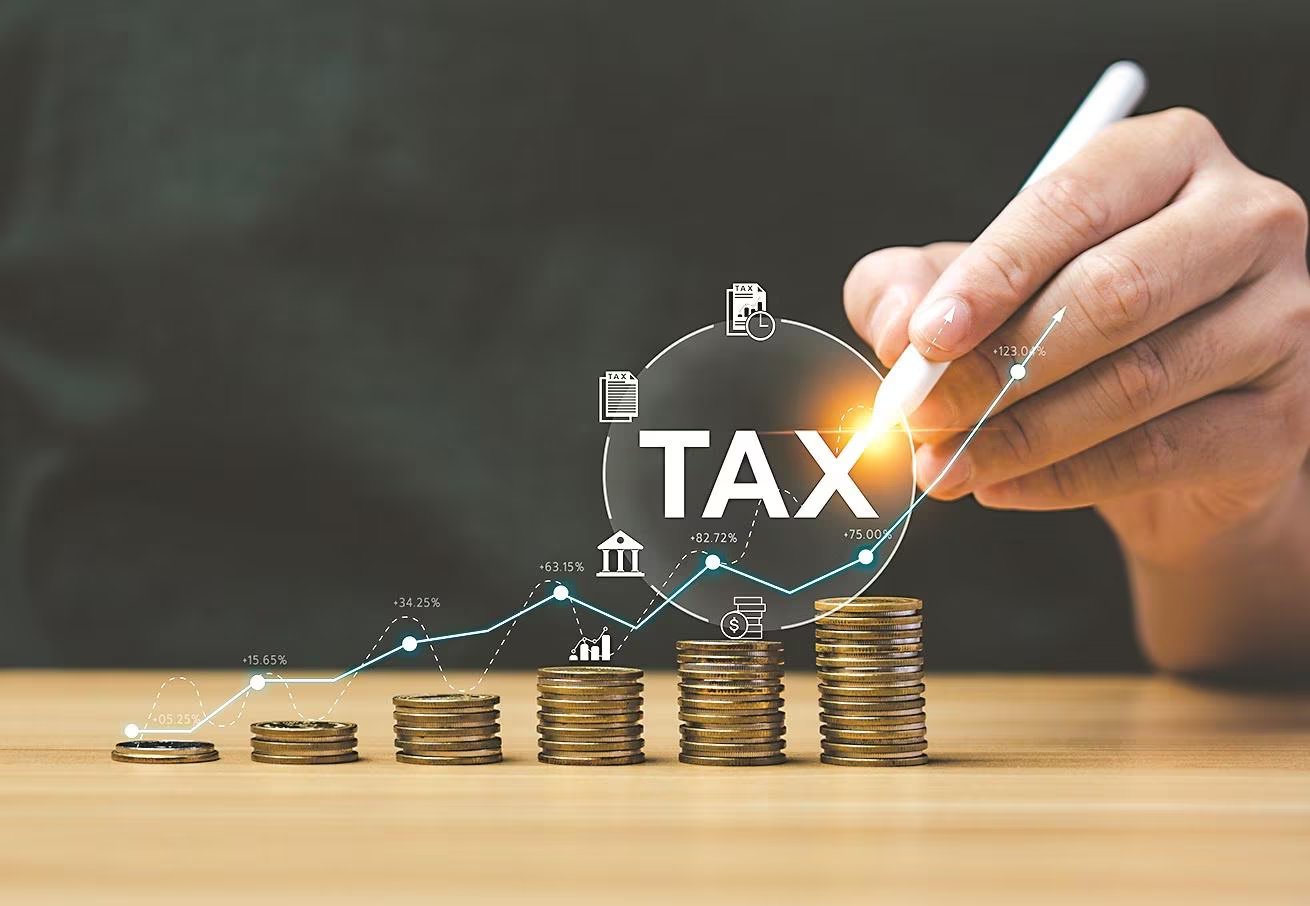Course description
The Statistical Tools and Interpretation unit in the Class 11 Economics course introduces students to essential statistical techniques used in economic analysis. This unit focuses on teaching students how to apply various statistical tools to organize, analyze, and interpret economic data. By mastering these tools, students will be able to draw meaningful conclusions and support economic decision-making.
Course Overview
This unit covers the following key topics:
Measures of Central Tendency
Measures of Dispersion
Correlation
Index Numbers
Interpretation of Results
Each of these topics equips students with the fundamental tools necessary for analyzing economic data and making informed conclusions.
1. Measures of Central Tendency
Key Concepts:
Mean (Arithmetic Average):
The sum of all observations divided by the number of observations.
Learn to calculate both simple and weighted means.
Median:
The middle value in an ordered data set.
Learn to find the median for both odd and even sets of data.
Mode:
The value that appears most frequently in a data set.
Understand how to calculate the mode for different types of data.
Learning Objectives:
Understand the importance of mean, median, and mode in summarizing data.
Learn to apply these measures to different data sets, such as income, prices, or production levels.
Interpret the results and understand which measure is most appropriate in various economic contexts.
2. Measures of Dispersion
Key Concepts:
Range: The difference between the highest and lowest values in a data set.
Quartiles and Interquartile Range (IQR): Divide data into four equal parts and measure the spread of the middle 50% of the data.
Mean Deviation: The average of the absolute differences between each data point and the mean.
Standard Deviation: A measure of the average distance of each data point from the mean, used to understand the variability or volatility in the data.
Learning Objectives:
Understand and compute measures of dispersion to assess the variability in a dataset.
Learn how dispersion helps to measure the spread and reliability of data in economic analysis (e.g., income inequality, price fluctuations).
Apply these measures to compare the consistency of different datasets.
3. Correlation
Key Concepts:
Correlation Coefficient: A statistical measure that shows the degree to which two variables move together.
Karl Pearson’s Coefficient of Correlation for quantitative data.
Spearman’s Rank Correlation for ordinal or ranked data.
Types of Correlation:
Positive Correlation: When both variables move in the same direction (e.g., income and consumption).
Negative Correlation: When one variable increases while the other decreases (e.g., price and demand).
Learning Objectives:
Understand the concept of correlation and its significance in economic analysis.
Learn how to calculate correlation and interpret the strength and direction of the relationship between two economic variables.
Apply correlation to study relationships between variables such as price and demand, or income and consumption.
4. Index Numbers
Key Concepts:
Index Numbers: Statistical measures that show relative changes in a variable (such as price, quantity, or value) over time.
Simple Index Numbers: Used to track changes in a single variable.
Weighted Index Numbers: Used when different variables have unequal importance.
Consumer Price Index (CPI): Measures changes in the cost of a basket of goods over time, and is widely used to track inflation.
Wholesale Price Index (WPI): Measures changes in the price of goods at the wholesale level.
Learning Objectives:
Understand the concept of index numbers and their application in tracking economic trends like inflation, cost of living, and purchasing power.
Learn to calculate simple and weighted index numbers, including important indices like CPI and WPI.
Interpret how changes in index numbers reflect changes in the economy over time.
5. Interpretation of Results
Key Concepts:
Interpreting Statistical Data: The ability to draw meaningful conclusions from the statistical tools applied.
Real-World Applications: Understanding how the results of statistical analysis can help in decision-making, policy formulation, and predicting economic trends.
Limitations of Statistical Analysis: Recognizing the limitations of statistical tools, such as biases in data or the inability to capture complex economic phenomena.
Learning Objectives:
Develop the ability to interpret statistical results and draw conclusions in the context of economics.
Learn to assess the reliability and significance of statistical findings.
Understand the limitations of statistical tools and how they affect the accuracy of economic analysis.
একাদশ শ্রেণির অর্থনীতি কোর্সে স্ট্যাটিস্টিক্যাল টুলস অ্যান্ড ইন্টারপ্রিটেশন ইউনিট শিক্ষার্থীদের অর্থনৈতিক বিশ্লেষণে ব্যবহৃত প্রয়োজনীয় পরিসংখ্যানগত কৌশলগুলির সাথে পরিচয় করিয়ে দেয়। এই ইউনিটটি শিক্ষার্থীদের অর্থনৈতিক তথ্য সংগঠিত, বিশ্লেষণ এবং ব্যাখ্যার জন্য বিভিন্ন পরিসংখ্যানগত সরঞ্জাম কীভাবে প্রয়োগ করতে হয় তা শেখানোর উপর দৃষ্টি নিবদ্ধ করে। এই সরঞ্জামগুলিতে দক্ষতা অর্জনের মাধ্যমে, শিক্ষার্থীরা অর্থপূর্ণ সিদ্ধান্ত নিতে এবং অর্থনৈতিক সিদ্ধান্ত গ্রহণে সহায়তা করতে সক্ষম হবে।
কোর্সের সারসংক্ষেপ
এই ইউনিটটি নিম্নলিখিত মূল বিষয়গুলি অন্তর্ভুক্ত করেঃ
কেন্দ্রীয় প্রবণতার পদক্ষেপ
বিচ্ছুরণ সম্পর্ক সূচক সংখ্যার পরিমাপ
ফলাফলের ব্যাখ্যা
এই বিষয়গুলির প্রত্যেকটিই শিক্ষার্থীদের অর্থনৈতিক তথ্য বিশ্লেষণ এবং জ্ঞাত সিদ্ধান্ত গ্রহণের জন্য প্রয়োজনীয় মৌলিক সরঞ্জাম দিয়ে সজ্জিত করে।
1টি। কেন্দ্রীয় প্রবণতার পরিমাপের মূল ধারণাগুলিঃ
গড় (গাণিতিক গড়)
সমস্ত পর্যবেক্ষণের সমষ্টি পর্যবেক্ষণের সংখ্যা দ্বারা ভাগ করা হয়।
সহজ এবং ওজনযুক্ত উভয় উপায়ে গণনা করতে শিখুন।
মধ্যবর্তীঃ
একটি অর্ডার করা ডেটা সেটের মধ্যবর্তী মান।
বিজোড় এবং এমনকি উভয় ডেটার সেটের জন্য মধ্যমা খুঁজে বের করতে শিখুন।
মোডঃ
একটি ডেটা সেটে সবচেয়ে ঘন ঘন প্রদর্শিত মান।
বিভিন্ন ধরনের তথ্যের জন্য মোডটি কীভাবে গণনা করা যায় তা বুঝুন।
শেখার উদ্দেশ্যঃ তথ্যের সংক্ষিপ্তসার করার ক্ষেত্রে গড়, মধ্যমা এবং মোডের গুরুত্ব বুঝুন।
আয়, মূল্য বা উৎপাদন স্তরের মতো বিভিন্ন ডেটা সেটগুলিতে এই ব্যবস্থাগুলি প্রয়োগ করতে শিখুন।
ফলাফলগুলি ব্যাখ্যা করুন এবং বুঝুন যে বিভিন্ন অর্থনৈতিক প্রেক্ষাপটে কোন পরিমাপটি সবচেয়ে উপযুক্ত।
2. বিচ্ছুরণ ব্যবস্থা
মূল ধারণাগুলিঃ
পরিসীমাঃ একটি ডেটা সেটের সর্বোচ্চ এবং সর্বনিম্ন মানের মধ্যে পার্থক্য।
কোয়ার্টাইল এবং ইন্টারকোয়ার্টাইল রেঞ্জ (আইকিউআর) ডেটা চারটি সমান অংশে বিভক্ত করুন এবং মধ্যবর্তী 50% ডেটা বিস্তার পরিমাপ করুন।
গড় বিচ্যুতিঃ প্রতিটি ডেটা পয়েন্ট এবং গড়ের মধ্যে পরম পার্থক্যের গড়।
স্ট্যান্ডার্ড বিচ্যুতিঃ গড় থেকে প্রতিটি ডেটা পয়েন্টের গড় দূরত্বের একটি পরিমাপ, যা ডেটাতে পরিবর্তনশীলতা বা অস্থিরতা বোঝার জন্য ব্যবহৃত হয়।
শেখার উদ্দেশ্যঃ
একটি ডেটাসেটের পরিবর্তনশীলতা মূল্যায়নের জন্য বিচ্ছুরণের পরিমাপগুলি বুঝুন এবং গণনা করুন।
অর্থনৈতিক বিশ্লেষণে তথ্যের বিস্তার এবং নির্ভরযোগ্যতা পরিমাপ করতে কীভাবে বিচ্ছুরণ সাহায্য করে তা জানুন (e.g., income inequality, price fluctuations).
বিভিন্ন ডেটাসেটের সামঞ্জস্যের তুলনা করতে এই পদক্ষেপগুলি প্রয়োগ করুন।
3. সম্পর্ক।
মূল ধারণাগুলিঃ
সম্পর্ক সহগ (Correlation Coefficient): একটি পরিসংখ্যানগত পরিমাপ যা দেখায় যে দুটি ভেরিয়েবল একসাথে কতটা সরে।
কার্ল পিয়ারসনের কোয়ান্টিটেটিভ ডেটার জন্য কোএফিশিয়েন্ট অফ কোরিলেশন।
অর্ডিনাল বা র্যাঙ্কিং ডেটার জন্য স্পিয়ারম্যানের র্যাঙ্ক কোরিলেশন।
সংযোগের প্রকারঃ
ইতিবাচক সম্পর্কঃ যখন উভয় চলক একই দিকে অগ্রসর হয় (e.g., income and consumption).
নেতিবাচক সম্পর্কঃ যখন একটি পরিবর্তনশীল বৃদ্ধি পায় এবং অন্যটি হ্রাস পায় (e.g., price and demand).
শেখার উদ্দেশ্যঃ
অর্থনৈতিক বিশ্লেষণে পারস্পরিক সম্পর্কের ধারণা এবং এর তাৎপর্য বুঝুন।
কীভাবে পারস্পরিক সম্পর্ক গণনা করা যায় এবং দুটি অর্থনৈতিক চলকের মধ্যে সম্পর্কের শক্তি ও দিক ব্যাখ্যা করা যায় তা শিখুন।
মূল্য ও চাহিদা, অথবা আয় ও খরচের মতো চলকের মধ্যে সম্পর্ক অধ্যয়নের জন্য পারস্পরিক সম্পর্ক প্রয়োগ করুন।
4. সূচক সংখ্যা
মূল ধারণাগুলিঃ
সূচক সংখ্যাঃ পরিসংখ্যানগত পরিমাপ যা সময়ের সাথে সাথে একটি পরিবর্তনশীল (যেমন মূল্য, পরিমাণ বা মান) আপেক্ষিক পরিবর্তন দেখায়।
সহজ সূচক সংখ্যাঃ একটি একক পরিবর্তনশীলের পরিবর্তনগুলি ট্র্যাক করতে ব্যবহৃত হয়।
ওজনযুক্ত সূচক সংখ্যাঃ যখন বিভিন্ন চলকের অসম গুরুত্ব থাকে তখন ব্যবহৃত হয়।
ভোক্তা মূল্য সূচক (সি. পি. আই) সময়ের সাথে সাথে পণ্যের দামের পরিবর্তন পরিমাপ করে এবং মুদ্রাস্ফীতি ট্র্যাক করতে ব্যাপকভাবে ব্যবহৃত হয়।
পাইকারি মূল্য সূচক (ডব্লিউপিআই) পাইকারি পর্যায়ে পণ্যের মূল্যের পরিবর্তন পরিমাপ করে।
শেখার উদ্দেশ্যঃ
সূচক সংখ্যার ধারণা এবং মুদ্রাস্ফীতি, জীবনযাত্রার ব্যয় এবং ক্রয়ক্ষমতার মতো অর্থনৈতিক প্রবণতা অনুসরণে তাদের প্রয়োগকে বুঝুন।
সিপিআই এবং ডব্লিউপিআই-এর মতো গুরুত্বপূর্ণ সূচকগুলি সহ সহজ এবং ওজনযুক্ত সূচক সংখ্যা গণনা করতে শিখুন।
সূচক সংখ্যার পরিবর্তন কীভাবে সময়ের সাথে অর্থনীতির পরিবর্তনকে প্রতিফলিত করে তা ব্যাখ্যা করুন।
5. ফলাফলের ব্যাখ্যা
মূল ধারণাগুলিঃ
পরিসংখ্যানগত তথ্যের ব্যাখ্যাঃ প্রয়োগ করা পরিসংখ্যানগত সরঞ্জামগুলি থেকে অর্থপূর্ণ সিদ্ধান্ত নেওয়ার ক্ষমতা।
রিয়েল-ওয়ার্ল্ড অ্যাপ্লিকেশনঃ পরিসংখ্যানগত বিশ্লেষণের ফলাফলগুলি কীভাবে সিদ্ধান্ত গ্রহণ, নীতি প্রণয়ন এবং অর্থনৈতিক প্রবণতার পূর্বাভাস দিতে সহায়তা করতে পারে তা বোঝা।
পরিসংখ্যানগত বিশ্লেষণের সীমাবদ্ধতা পরিসংখ্যানগত সরঞ্জামগুলির সীমাবদ্ধতাগুলি স্বীকৃতি দেওয়া, যেমন তথ্যের পক্ষপাতিত্ব বা জটিল অর্থনৈতিক ঘটনাগুলি ধরতে অক্ষমতা।
শেখার উদ্দেশ্যঃ
পরিসংখ্যানগত ফলাফলগুলি ব্যাখ্যা করার এবং অর্থনীতির প্রেক্ষাপটে সিদ্ধান্ত নেওয়ার ক্ষমতা বিকাশ করুন।
পরিসংখ্যানগত ফলাফলের নির্ভরযোগ্যতা এবং তাৎপর্য মূল্যায়ন করতে শিখুন।
পরিসংখ্যানগত সরঞ্জামগুলির সীমাবদ্ধতা এবং তারা কীভাবে অর্থনৈতিক বিশ্লেষণের নির্ভুলতাকে প্রভাবিত করে তা বুঝুন।



















